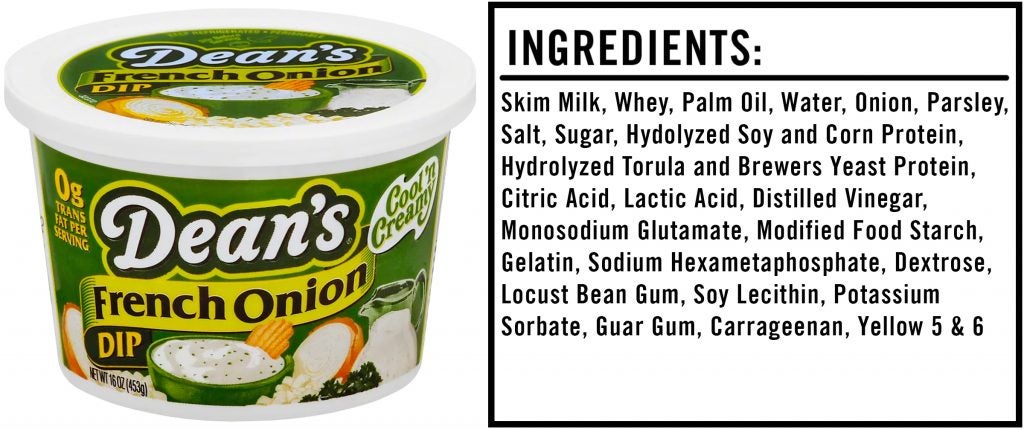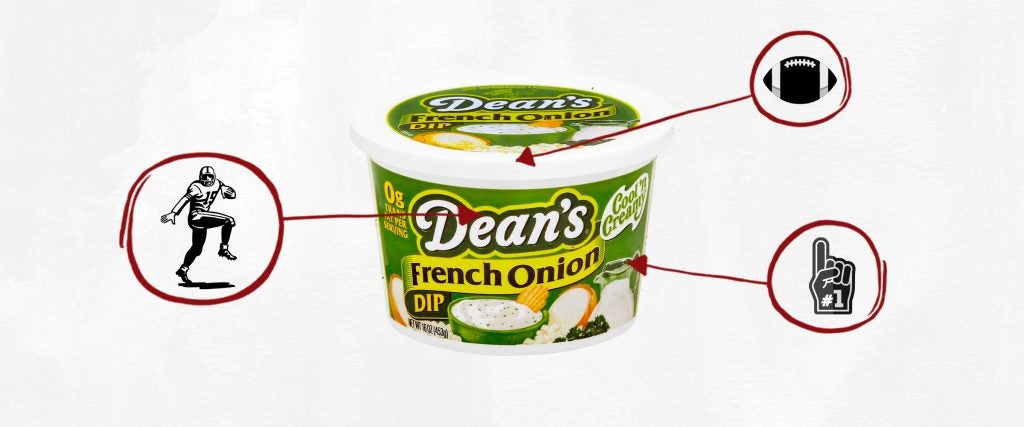Forget Thanksgiving. The most gluttonous day of the year is Super Bowl Sunday, where bowl after bowl and paper plate after paper plate is filled with finger-food bacchanalia that would make even the mad genius responsible for the TGI Friday’s appetizer selection blush (and certainly the ancient Romans). And so, all week leading up to game day, we’ll be offering up our own menu of scientific investigations, origin stories and majestic feats of snacking that not even the biggest sporting event of the year can top. Read all of the stories here.
It turns out that some of your Super Bowl party guests are the sort of folks for whom the salty, golden, oily, rustic deliciousness of a plain potato chip — ridged or not — just isn’t sufficient. We can discuss your taste in friends later (needless to say, they’re all snobs) and focus instead on acceptable alternatives to remedy this situation.
You can’t dip potato chips in salsa because they’re not tortilla chips (everyone knows this), and you also can’t dip them in cheese dip because they’re not french fries or potato skins (duh!). The rules regarding chips, potatoes and dips are rock solid. I didn’t make them; I simply abide by them.
What option remains then? The only acceptable dip in which to submerge a potato chip: French onion dip. And more specifically: Dean’s French Onion Dip. But given that your guests are such chip snobs, you’d better take a good, hard look at the ingredients list. You wouldn’t want to bespoil their chip-dipping with something they deem beneath them, even if Dean’s has been the go-to chip dip for generations now.

Ingredients
Skim Milk: Milk with all (or at least 99.9 percent) of its fat eliminated from it.
Whey (Milk): The remnants left over from the cheesemaking process, and the world’s best-selling form of supplemental protein. Also, if you’ve decided that you’d rather supplement your diet with the protein that actually ends up in the cheese, they sell jars of that as well.
Palm Oil: Edible oil from the oil palm tree. This stuff is used in more than half of consumed American products, including cosmetics, soaps and detergents.
Water: Water that’s hopefully undergone some level of purification.
Onion (Dehydrated): Practically every processed food that’s “spicy” contains either dehydrated garlic, dehydrated onion, or both. Be on the lookout for this if you suffer from a sensitivity to fructose; both garlic and onion have it in spades.
Parsley (Dehydrated): Far from being just an annoying food ornament that you scrape away from the main course, parsley is so sky high in vitamin K that even a sprig will give you a substantial dose of it.
Salt: Each serving only has 170 milligrams of salt, or 7 percent of the recommended daily sodium intake. This means that even if you scoop your way through an entire 8-ounce bowl of French onion dip, you’d still be just shy of the 50-percent mark.
Sugar: Only two grams of the world’s favorite white sweetener here; nothing to lose your mind over… unless you’re on the keto diet.
Hydrolyzed Soy and Corn Protein: Don’t be fooled by the vegetables and the proteins; this is MSG. When soy and corn are boiled in hydrochloric acid and neutralized in sodium hydroxide, it breaks down the proteins into its amino acid components. Amino acids are proteins, and this particular protein is MSG. It imbues food with an irresistible savory flavor, and also doles out headaches more than just occasionally.
Hydrolyzed Torula and Brewer’s Yeast Protein: Take everything you just read about hydrolyzed soy and corn protein, and apply it here. Just another way to sneak in additional MSG.
Citric Acid: A derivative of citric fruits that provides a tart, sour flavor, and also acts as a preservative.
Lactic Acid: You know that stuff that builds up in your muscles and makes you tired? Yeah… this isn’t exactly the same thing. This is produced during the fermentation of foods and then tossed in as a preservative.
Acetic Acid: A byproduct of fermentation that gives vinegar its sour taste and pungent smell. It’s also a preservative used for its antimicrobial properties.
Monosodium Glutamate: Better known as the aforementioned MSG, monosodium glutamate is a naturally occurring amino acid that’s added to foods as a savory flavor enhancer. Its inclusion in foods is often highly controversial, and many people suffer from headaches as a result of it. In this instance, it’s the third form of MSG contained within the onion dip, but the first to actually carry the name on the label.
Food Starch-Modified: Extracted from corn, potato, tapioca, rice or wheat, and then treated physically, enzymatically or chemically to partially break down the starch. In this instance, it’s been used to add bulk to the dip and make it less runny.
Gelatin: A colorless, flavorless protein derived from various animal parts, so if you think this dip is vegan or vegetarian friendly, think again. It’s commonly used as a gelling agent, and is helping to hold this dip together.
Sodium Hexametaphosphate: This is commonly added to foods as a sequestrant, thickener, emulsifier and texturizer. It’s generally recognized as safe by the FDA. Animal studies involving rats have found some shocking side effects of consuming ludicrous doses — like more than 10 times the amount a normal human would consume, every day for an entire month — but we’re not here to scare you for no reason.
Locust Bean Gum: Don’t be fooled by the name — it’s extracted from a bean that looks like a locust, and not an actual insect… not that there’s anything wrong with that. Locust bean gum is a natural food additive derived from carob seeds that’s used primarily as a thickening and stabilizing agent.
Soy Lecithin: A fat component found in soy that’s usually added to food products as an emulsifier to help the ingredients mix together. In essence, this is what you need to force oil and water to mix.
Potassium Sorbate: Potassium sorbate is a widely used preservative. Although high doses of it applied to the skin have shown to cause irritation, the low doses in food haven’t been shown to be a problem; an average person can consume 1,750 milligrams of it each day with no issues.
Guar Gum: Made from guar beans, this is a food thickener that also forms a gel and helps ingredients to bind together.
Carrageenan: A vegan and vegetarian approved gelatin substitute made from red seaweed. Of course, this is a moot point, because this dip already contains actual gelatin.
Yellow 5 & 6: Lemon-yellow and orange-yellow dyes used to alter the color of food. Since this dip is obviously of a pale shake, I shudder to think of what it would look like without the addition of two different varieties of yellow.
The Takeaway
Far be it from me to judge a milk-heavy product that doesn’t require refrigeration before it’s opened, but there are a whole lot of preservatives and MSG-laden chemicals swimming around Dean’s French Onion Dip. The caloric content could be more alarming, but that’s the least of your problems. Sometimes you have to trust your instincts.
We already know the MSG is a trick to make the dip irresistible to you, but we also know that real milk spoils within five to seven days after its sell-by date even if it’s been unopened and refrigerated the entire time! When your milk-and-water-based dip can sit around at room temperature for months without spoiling, you should be asking thought-provoking questions about the chemistry situated therein.

